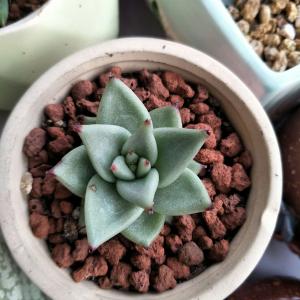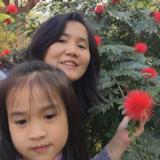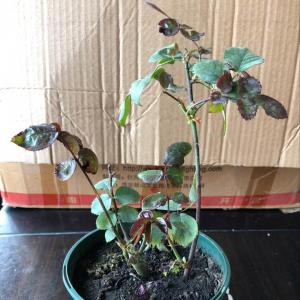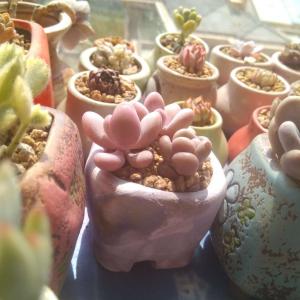文章
木木
2018年03月28日

有花友问白银寿有哪些品种,说实话编辑真不能全部说出来,不过编辑找到了白银系的26个品种图,都是一些有代表性的品种,供花友们欣赏。
1、白银SP
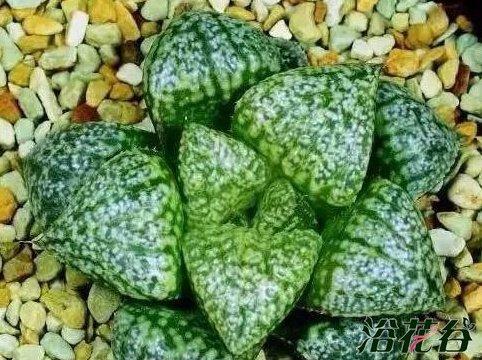
2、白银潘多拉锦

3、白银青木丸叶
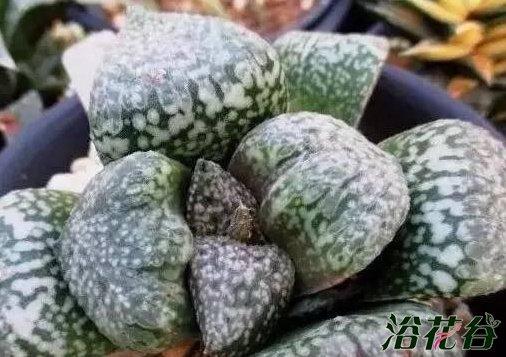
4、白银麦当娜
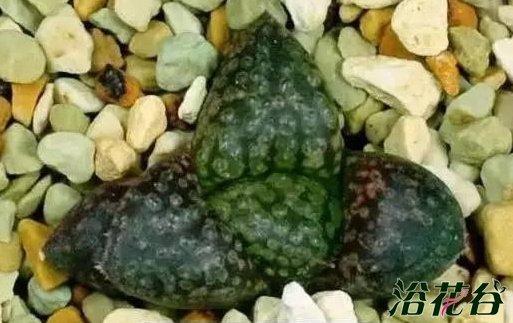
5、白银皇家
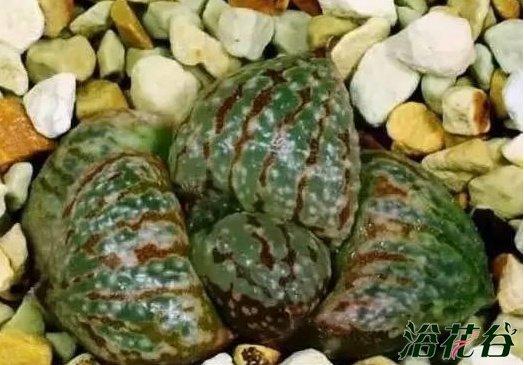
6、白银海萤
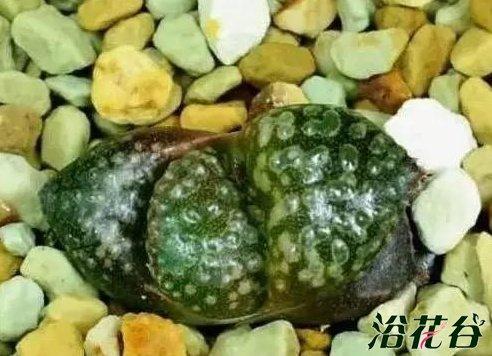
7、白银海皇
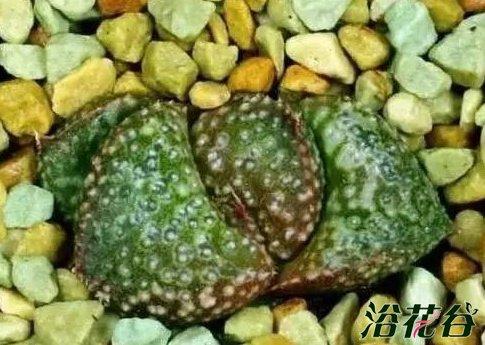
8、白银白拍子
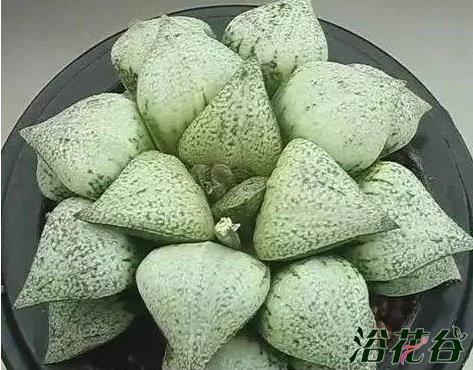
9、白银白雪姬

10、白银白鹰
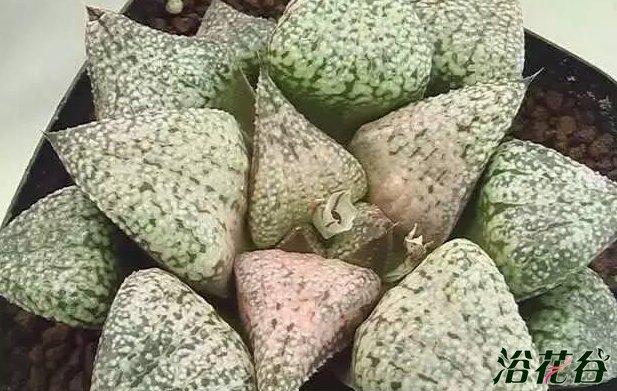
11、白银大白莲

12、白银福绿
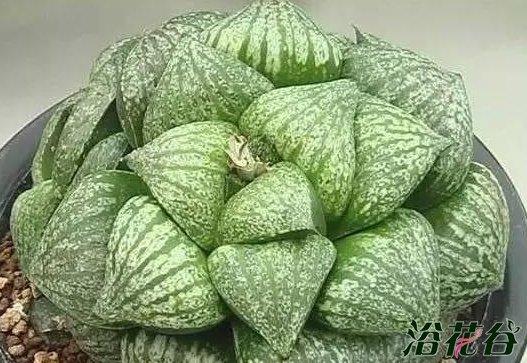
13、白银极乐殿
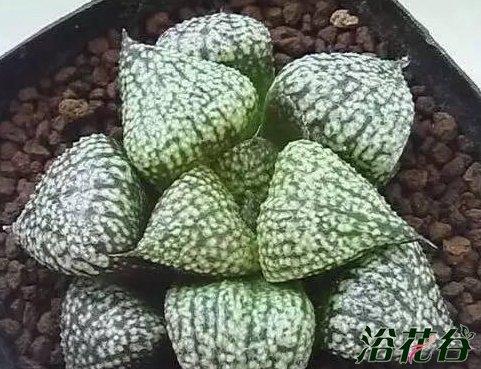
1、白银SP

2、白银潘多拉锦

3、白银青木丸叶

4、白银麦当娜

5、白银皇家

6、白银海萤

7、白银海皇

8、白银白拍子

9、白银白雪姬

10、白银白鹰

11、白银大白莲

12、白银福绿

13、白银极乐殿

0
0
文章
权问薇
2018年03月28日


一、扦插繁殖
1、选取插条
在每年春天对它进行修剪的时候,我们可以把它剪下来的茎枝作为插条,之后稍微的处理一下,然后就可以进行去扦插了。
2、扦插
扦插的话,首先我们先把土壤选择好了,一般都是选一些较为疏松和肥沃的土壤,然后事先给土壤浇透水,再晾一下,我们就可以把准备好的枝条插在里面了,插的时候一定要注意,不可以把枝条全部插进土里面,不然就没法成活了,插条插好了之后,我们就可以将它带盆放在强光下照射,并保持温度适当,另外还要给它进行适当的浇水,之后大约过上2星期的时间,插条就会开始发根了,这样就会慢慢的形成一个新的植株了。
二、孢子繁殖
1、取孢子
如果想要用这种方法进行繁殖的话,那我们要事先准备好一个长条形的纸袋,大小的话要根据叶子大小来定。纸袋准备好之后,我们就可以在叶背的孢子囊刚开始显现的时候,取来纸袋把它套在叶片上绑好,这样等到孢子成熟的时候,它就会自动的落入到这个纸袋里面。因为孢子极其的小,就像灰尘状似的,所以我们在取它的时候,一定要将纸袋随同叶子一块剪下来,之后让叶端向下,以便于孢子能够全部集中在纸袋的底部,然后就可以将叶片取出来,再把每个袋子里的孢子全部集中在一个袋子里,这样就可以去播种了。、

2、播种
我们先将土壤准备好,之后再将土壤进行一下高温杀毒,然后找来一个盆子将土壤装进去并将它压平了,之后就可以将准备好的孢子依次的撒在盆土里面了,撒完之后,我们就可以开始给盆子浸水,这样就可以让土壤充分湿润,浸水之后,我们就可以给它保温等待萌发了。
0
0
文章
张祥明
2018年03月28日


一.缘由
1如果要解决这种植物不开花,那么首先要找出来到底是什么缘由导致它不开花。它的成长地阳光不够充足。
2它的成长扎根的土不能符合它的习性提供它所需要的养分。
3没有可供它攀爬的架子。
4水肥不够。
5没有给它做好保暖的措施。

二.解决方法
1因为这种植物好光,喜欢朝向太阳的环境,所以一定要安排一个能够没有太多遮挡,能够让它好好的享受太阳的地方种植。
2种植的土一定要符合它的要求,因为它喜欢肥沃的、湿润的、酸性的土,而且土最好是含有有机质,排水性要非常好,如果泥土的酸碱度不对,那么我们可以在浇灌的水中人为地加入硫酸亚铁补充植株成长的要求,少加点就行。
3因为这种植物是一种攀援的藤本的植物,会长出卷须,而且它必须要有物体来借助它攀爬成长。无论是为了美观需要还是为了种植需要,我们都可以给它搭一个架子,或者说搭一个棚,让它可以自由地攀爬汲取光照。

4因为这种植物的成长速度非常快,它孕育的花蕾又多,花期又非常地长,如果水分和肥料不够充足的话,就不能够结出一串串硕大的花苞,所以在它的成长期要每个月都给它施一次肥料,最好是在网上购买或者是从花农处购买一些腐熟稀薄的豆饼混水浇在种植植株的土层上面。还要保持泥土的一定的湿润,淋水的次数可以观察土层的湿润情况。在夏天除了要按时淋水,对于枝叶还要保持每天2到3次的喷水,同时向地面洒水以提高空气的湿度。在花朵孕育的时候最好能够补充一次氮肥。
5这种植物非常不能够抵抗寒冷,所以在北方的冬天要把它移植到屋子里面过冬,还要接触阳光,这个时候要控制淋水的量,不要施肥,室内的温度要保持在10度以上。
0
0
文章
Miss Chen
2018年03月27日

Description: This biennial wildflower forms a low rosette of leaves about 8-12" across during the first year. During the second year, it bolts and becomes 2-7' tall. Usually, this wildflower is unbranched, although sometimes ascending lateral branches develop along the upper one-third of a large plant. The central stem (and any lateral stems) is rather stout, terete, and light green to pale purple; it is usually hairy along the lower half of its length, becoming hairless and slightly glaucous along the upper half. The alternate leaves are up to 6" long and 2" across, becoming gradually smaller as they ascend the stem; they are pinnatifid with pointed irregular lobes and dentate along their margins. The upper surfaces of these leaves are medium green and often sparsely hairy; their lower surfaces are pale green and hairy, particularly along the midribs.
The basal leaves are similar to the alternate leaves, except they tend to be larger in size and more wide toward their tips (narrowly obovate to obovate). Young developing basal leaves are usually very hairy on both their upper and lower surfaces. The central stem (and any lateral stems) terminates in an elongated panicle of flowerheads about 6-12" long and 2-4" across. The branches of the panicle are light green to reddish purple, terete, and usually hairless. Each flowerhead is about 1/3" (8-10 mm.) across when fully open, consisting of 12-25 ray florets, no disk florets, and light green to purple floral bracts that are arranged in about 3 series around its base (involucre); this base is about 2/3–3/4" (15-20 mm.) long. The rays of the flowerhead are colored salmon to brick-red and their tips are truncate and finely toothed. The outer floral bracts are shorter than the inner floral bracts.

The blooming period occurs from mid-summer to early fall and usually lasts about 3 weeks. Individual flowerheads last only a single day, blooming for only a few hours on sunny days. After only a short period of time, individual flowerheads are replaced by small black achenes with tufts of white hair. Each achene is 4-5 mm. long, ellipsoid-oblanceoloid in shape, and flattened; the tuft of white hairs is attached to the achene by a slender white beak about 2.5–3.5 mm. long. These achenes are distributed by the wind. The root system consists of a taproot. This wildflower reproduces by reseeding itself.
Cultivation: The preference is partial sun, mesic to dry conditions, and somewhat acidic sandy or rocky soil. The size of individual plants is highly variable, depending on moisture levels and soil fertility.

Range & Habitat: Red-Flowered Wild Lettuce is a rare native plant in Illinois and it is state-listed as 'endangered.' Thus far, this species has been collected from a single county in southern Illinois (see Distribution Map). Because this species can be confused with other Lactuca spp., it may occur in other areas of the state. Outside of Illinois, this species is also uncommon. Habitats include upland rocky woodlands, woodland openings, woodland borders, upland savannas, sandstone glades, pastures, and abandoned fields. These habitats also include sandy areas. Red-Flowered Wild Lettuce prefers some disturbance to reduce the abundance of woody vegetation.

Faunal Associations: Little is known about floral-faunal relationships for this particular species. The flowerheads are probably cross-pollinated by various bees (medium- to small-sized), which offer nectar and pollen. In general, the caterpillars of some moths feed on Lactuca spp. (Wild Lettuce species), including Autographa precationis (Common Looper Moth), Grammia virgo (Virgin Tiger Moth), and Cucullia intermedia (Intermediate Cucullia). The caterpillars of the last moth species feed on the flowerheads. Other insect feeders include Thrips physapus (Dandelion Thrips) and several aphid species: Hyperomyza lactucae (Currant-Sowthistle Aphid), Nasonovia ribisnigri (Currant-Lettuce Aphid), Pemphigus bursarius (Lettuce Root Aphid), Prociphilus erigeronensis (White Aster Root Aphid), Uroleucon ambrosiae (Brown Ambrosia Aphid), Uroleucon gravicorne (Aphid sp.), Uroleucon pseudambrosiae (False Ambrosia Aphid), Uroleucon rudbeckiae (Golden Glow Aphid), and Uroleucon sonchella (Sowthistle Aphid). Among vertebrate animals, the Eastern Goldfinch eats the seeds, while White-Tailed Deer occasionally graze on the foliage of Lactuca spp.
Photographic Location: The wildflower garden of the webmaster in Urbana, Illinois.

Comments: This unusual species has been sadly neglected from many wildflower field guides. Although it has an extensive range in the eastern half of the United States, Red-Flowered Wild Lettuce appears to be uncommon to rare in most areas. The preceding description applies to var. sanguinea, rather the typical variety. In other areas of its range, Lactuca hirsuta may have yellow flowerheads and the hairiness of its stems and leaves can be variable (from nearly hairless to very hairy). Red-Flowered Wild Lettuce can be easily confused with the more common Lactuca canadensis (Common Wild Lettuce), which is itself a rather variable species. Generally, Common Wild Lettuce has flowerheads that are pale yellow to dull orange, flowerheads with shorter bases (involucres) that are ½" or less, and shorter achenes (less than 4 mm. long). Common Wild Lettuce is usually completely glabrous (except for some hairs along the lower midribs of its leaves), and its upper stems and floral branches are usually less purple. Another species, Lactuca biennis (Tall Blue Lettuce), has light blue to cream-colored flowerheads and its achenes have shorter beaks and tufts of tawny or gray hair, rather than white hair. These different Lactuca spp. cannot be identified reliably unless the flowerheads or tufted achenes are available for examination. Another common name of Lactuca hirsuta is Hairy Wild Lettuce.
The basal leaves are similar to the alternate leaves, except they tend to be larger in size and more wide toward their tips (narrowly obovate to obovate). Young developing basal leaves are usually very hairy on both their upper and lower surfaces. The central stem (and any lateral stems) terminates in an elongated panicle of flowerheads about 6-12" long and 2-4" across. The branches of the panicle are light green to reddish purple, terete, and usually hairless. Each flowerhead is about 1/3" (8-10 mm.) across when fully open, consisting of 12-25 ray florets, no disk florets, and light green to purple floral bracts that are arranged in about 3 series around its base (involucre); this base is about 2/3–3/4" (15-20 mm.) long. The rays of the flowerhead are colored salmon to brick-red and their tips are truncate and finely toothed. The outer floral bracts are shorter than the inner floral bracts.

The blooming period occurs from mid-summer to early fall and usually lasts about 3 weeks. Individual flowerheads last only a single day, blooming for only a few hours on sunny days. After only a short period of time, individual flowerheads are replaced by small black achenes with tufts of white hair. Each achene is 4-5 mm. long, ellipsoid-oblanceoloid in shape, and flattened; the tuft of white hairs is attached to the achene by a slender white beak about 2.5–3.5 mm. long. These achenes are distributed by the wind. The root system consists of a taproot. This wildflower reproduces by reseeding itself.
Cultivation: The preference is partial sun, mesic to dry conditions, and somewhat acidic sandy or rocky soil. The size of individual plants is highly variable, depending on moisture levels and soil fertility.

Range & Habitat: Red-Flowered Wild Lettuce is a rare native plant in Illinois and it is state-listed as 'endangered.' Thus far, this species has been collected from a single county in southern Illinois (see Distribution Map). Because this species can be confused with other Lactuca spp., it may occur in other areas of the state. Outside of Illinois, this species is also uncommon. Habitats include upland rocky woodlands, woodland openings, woodland borders, upland savannas, sandstone glades, pastures, and abandoned fields. These habitats also include sandy areas. Red-Flowered Wild Lettuce prefers some disturbance to reduce the abundance of woody vegetation.

Faunal Associations: Little is known about floral-faunal relationships for this particular species. The flowerheads are probably cross-pollinated by various bees (medium- to small-sized), which offer nectar and pollen. In general, the caterpillars of some moths feed on Lactuca spp. (Wild Lettuce species), including Autographa precationis (Common Looper Moth), Grammia virgo (Virgin Tiger Moth), and Cucullia intermedia (Intermediate Cucullia). The caterpillars of the last moth species feed on the flowerheads. Other insect feeders include Thrips physapus (Dandelion Thrips) and several aphid species: Hyperomyza lactucae (Currant-Sowthistle Aphid), Nasonovia ribisnigri (Currant-Lettuce Aphid), Pemphigus bursarius (Lettuce Root Aphid), Prociphilus erigeronensis (White Aster Root Aphid), Uroleucon ambrosiae (Brown Ambrosia Aphid), Uroleucon gravicorne (Aphid sp.), Uroleucon pseudambrosiae (False Ambrosia Aphid), Uroleucon rudbeckiae (Golden Glow Aphid), and Uroleucon sonchella (Sowthistle Aphid). Among vertebrate animals, the Eastern Goldfinch eats the seeds, while White-Tailed Deer occasionally graze on the foliage of Lactuca spp.
Photographic Location: The wildflower garden of the webmaster in Urbana, Illinois.

Comments: This unusual species has been sadly neglected from many wildflower field guides. Although it has an extensive range in the eastern half of the United States, Red-Flowered Wild Lettuce appears to be uncommon to rare in most areas. The preceding description applies to var. sanguinea, rather the typical variety. In other areas of its range, Lactuca hirsuta may have yellow flowerheads and the hairiness of its stems and leaves can be variable (from nearly hairless to very hairy). Red-Flowered Wild Lettuce can be easily confused with the more common Lactuca canadensis (Common Wild Lettuce), which is itself a rather variable species. Generally, Common Wild Lettuce has flowerheads that are pale yellow to dull orange, flowerheads with shorter bases (involucres) that are ½" or less, and shorter achenes (less than 4 mm. long). Common Wild Lettuce is usually completely glabrous (except for some hairs along the lower midribs of its leaves), and its upper stems and floral branches are usually less purple. Another species, Lactuca biennis (Tall Blue Lettuce), has light blue to cream-colored flowerheads and its achenes have shorter beaks and tufts of tawny or gray hair, rather than white hair. These different Lactuca spp. cannot be identified reliably unless the flowerheads or tufted achenes are available for examination. Another common name of Lactuca hirsuta is Hairy Wild Lettuce.
0
0
文章
Miss Chen
2018年03月27日

Description: This perennial wildflower consists of a rosette of basal leaves, from which a flowering stalk about 1-2' tall is produced. The basal leaves are up to 7" long and 2" across; they are pale green to green, hairless, and oblanceolate or obovate in shape. Their margins are smooth, undulate, slightly dentate, or slightly pinnatifid. The flowering stalk is pale green, hairless, glaucous, terete, and erect. There are 1-2 cauline leaves on the flowering stalk that are ovate in shape and smooth or dentate along their margins. Where the uppermost cauline leaf occurs, the stalk branches into 2-5 ascending peduncles. Each peduncle terminates in a yellow or orange-yellow flowerhead about 1–1½" across. Each flowerhead has many spreading ray florets and no disk florets. Each ray floret is narrowly oblong and yellow or orange-yellow; it has a truncate tip with 5 small teeth. The base of the flowerhead is surrounded by several floral bracts in a single series; each bract is pale green, linear-lanceolate, hairless, glaucous, and about 1/3" (8 mm.) in length or a little longer. The blooming period can occur from late spring to mid-summer and lasts about a month. Later in the year, the ray florets are replaced by small achenes. Each achene is bullet-shaped and truncate at the apex, where it has a tuft of white hairs. The achenes are distributed by the wind. The root system consists of a thickened crown with fibrous roots.

Cultivation: The preference is partial or dappled sunlight and mesic to dry conditions. Different kinds of soil are tolerated, including those containing loam, clay-loam, sand, or rocky material. Water-logged sites should be avoided.
Range & Habitat: The native Two-Flowered Cynthia is occasional to locally common throughout Illinois (see Distribution Map). Habitats include open upland woodlands, open sandy woodlands, savannas and sandy savannas, rocky wooded slopes, thinly wooded bluffs, areas along woodland paths, rocky glades, and upland meadows. Two-Flowered Cynthia is often found in upland habitats where Oaks are dominant in areas with thin leaf cover and sparse ground vegetation.
Faunal Associations: The flowerheads attract long-tongued bees (bumblebees, honeybees, Little Carpenter bees, Cuckoo bees, Mason bees), short-tongued bees (Halictid bees, Masked bees), predatory wasps, flies (Syrphid, Tachinid, & others), butterflies, skippers, and beetles. These insects suck nectar, collect pollen, or feed on pollen from the flowerheads. An oligolectic visitor, Andrena krigiana (Krigia Andrenid Bee), is specifically attracted to the flowerheads of Krigia spp. In addition to these floral visitors, an aphid, Uroleucon brachychaetum, sucks plant juices from these plants. Thus far, I have not observed any evidence that White-Tailed Deer feed on the foliage of Two-Flowered Cynthia, which contains a bitter white latex, although I would not rule out this possibility.
Photographic Location: The photographs were taken along the edge of two wooded bluffs in Vermilion County, Illinois.
Comments: The flowerheads and foliage of this wildflower are quite attractive. Most members of the Aster family with dandelion-like flowerheads (including other Krigia spp. in Illinois) have yellow ray florets, but the ray florets of Two-Flowered Cynthia often have an orange tint. Two-Flowered Cynthia has larger flowerheads (1" across or more), longer floral bracts (1/3" or more), and its achenes have more bristly hairs (20 or more) than either Krigia virginica or Krigia caespitosa (both annuals). Another species, Krigia dandelion (Potato Dandelion) has unbranched flowering stalks that each produce a single flowerhead. In contrast, Two-Flowered Cynthia has flowering stalks that branch above their uppermost cauline leaves, each stalk producing 2-5 flowerheads on separate peduncles.

Cultivation: The preference is partial or dappled sunlight and mesic to dry conditions. Different kinds of soil are tolerated, including those containing loam, clay-loam, sand, or rocky material. Water-logged sites should be avoided.
Range & Habitat: The native Two-Flowered Cynthia is occasional to locally common throughout Illinois (see Distribution Map). Habitats include open upland woodlands, open sandy woodlands, savannas and sandy savannas, rocky wooded slopes, thinly wooded bluffs, areas along woodland paths, rocky glades, and upland meadows. Two-Flowered Cynthia is often found in upland habitats where Oaks are dominant in areas with thin leaf cover and sparse ground vegetation.
Faunal Associations: The flowerheads attract long-tongued bees (bumblebees, honeybees, Little Carpenter bees, Cuckoo bees, Mason bees), short-tongued bees (Halictid bees, Masked bees), predatory wasps, flies (Syrphid, Tachinid, & others), butterflies, skippers, and beetles. These insects suck nectar, collect pollen, or feed on pollen from the flowerheads. An oligolectic visitor, Andrena krigiana (Krigia Andrenid Bee), is specifically attracted to the flowerheads of Krigia spp. In addition to these floral visitors, an aphid, Uroleucon brachychaetum, sucks plant juices from these plants. Thus far, I have not observed any evidence that White-Tailed Deer feed on the foliage of Two-Flowered Cynthia, which contains a bitter white latex, although I would not rule out this possibility.
Photographic Location: The photographs were taken along the edge of two wooded bluffs in Vermilion County, Illinois.
Comments: The flowerheads and foliage of this wildflower are quite attractive. Most members of the Aster family with dandelion-like flowerheads (including other Krigia spp. in Illinois) have yellow ray florets, but the ray florets of Two-Flowered Cynthia often have an orange tint. Two-Flowered Cynthia has larger flowerheads (1" across or more), longer floral bracts (1/3" or more), and its achenes have more bristly hairs (20 or more) than either Krigia virginica or Krigia caespitosa (both annuals). Another species, Krigia dandelion (Potato Dandelion) has unbranched flowering stalks that each produce a single flowerhead. In contrast, Two-Flowered Cynthia has flowering stalks that branch above their uppermost cauline leaves, each stalk producing 2-5 flowerheads on separate peduncles.
0
0
文章
Miss Chen
2018年03月27日

Description: This is a perennial wildflower about 2½-6' tall that is either unbranched or sparingly branched. The central stem is light gray-green, densely pubescent, terete, and rather stout. Alternate leaves occur at intervals along this stem. Individual leaves are up to 7" long and 6" across; they are oval-cordate in outline with 3-7 palmate lobes and crenate-dentate margins. Usually the middle lobes of the leaves are larger than the lateral lobes. The upper surface of these leaves is medium green and hairless to sparsely pubescent, while their lower surface is light gray-green and pubescent. The petioles are up to 6" long, light gray-green, and pubescent. Sometimes short secondary stems with small leaves develop from the axils of the leaves on the central stem. Flowers are produced either individually or in clusters of 2-3 from the axils of the leaves along the upper half of each plant. The pedicels of these flowers are rather short (up to ¾" long), light gray-green, and pubescent. Each flower is 1¼-2½" across, consisting of 5 light pink petals (obcordate in shape), 5 light gray-green sepals (ovate in shape) that are joined together at the base, a central reproductive column, and 3 light gray-green floral bracts (linear in shape). Individual sepals are about ½" in length, while individual floral bracts are about the same length; both floral bracts and sepals are short-pubescent. The stamens are located along the outer half of the reproductive column, while the styles are located at its tip. The anthers of the stamens are pale yellow or white.
The blooming period occurs during the summer, lasting about 2 months. Individual flowers are short-lived and slightly fragrant. Afterwards, each fertile flower is replaced by a ring of carpels containing the seeds. The carpels are reniform and narrowly wedge-shaped; their outer edges are pubescent. Each carpel contains 2-4 seeds (about 3 mm. in length). The root system consists of a short stout taproot and rhizomes. Vegetative colonies of plants occasionally develop from the rhizomes.
Cultivation: The preference is full or partial sun, moist to mesic conditions that are well-drained, and soil containing some loam or rocky material. Germination of the seeds requires scarification of the seed coat through mechanical means or by fire. In a dormant state, the seeds can be remain viable for up to 50 years. Cross-pollination with genetically distinct plants is required for the production of viable seeds.

Range & Habitat: The native Kankakee Mallow has been found only in Kankakee County, where it is rare and state-listed as 'endangered' (see Distribution Map). Habitats consist of rocky riverbanks, woodland edges, open rocky woodlands, and abandoned fields. In all of these habitats within Illinois, the underlying bedrock of the thin soil consists of dolomite. Occasional wildfires are beneficial in maintaining populations of Kankakee Mallow as they stimulate the germination of seeds and reduce competition from woody vegetation. This wildflower has been cultivated successfully in gardens.
Faunal Associations: Very little is known about floral-faunal relationships for this rare wildflower. The flowers are probably cross-pollinated by various long-tongued and short-tongued bees. White-Tailed Deer and other mammalian herbivores readily browse on the foliage. It may be necessary to place wire cages over individual plants in order to protect them from such animals.

Photographic Location: A flower garden in Urbana, Illinois.
Comments: The Kankakee Mallow has attractive flowers and foliage. This rare wildflower is endemic to Illinois, although an adventive population has been found in Indiana near a railroad. It is thought that members of a Chicago wildflower society may have established this population by throwing seeds of the Kankakee Mallow out of the window of a passing train during the early 20th century. There are some differences of opinion regarding the taxonomic classification of the Kankakee Mallow. It has been classified as the typical variety of a more western species, Iliamna rivularis (Mountain Hollyhock), and sometimes it is considered the same species as the more eastern Iliamna corei (Peter's Mountain Mallow). This last species was discovered on a sandstone outcrop in Virginia, where it was under attack by feral goats. The Kankakee Mallow differs from Peter's Mountain Mallow by having flowers that are fragrant. In general, mallows of the Iliamna genus differ from many other mallows by having 3 linear floral bracts behind the sepals of each flower.
The blooming period occurs during the summer, lasting about 2 months. Individual flowers are short-lived and slightly fragrant. Afterwards, each fertile flower is replaced by a ring of carpels containing the seeds. The carpels are reniform and narrowly wedge-shaped; their outer edges are pubescent. Each carpel contains 2-4 seeds (about 3 mm. in length). The root system consists of a short stout taproot and rhizomes. Vegetative colonies of plants occasionally develop from the rhizomes.
Cultivation: The preference is full or partial sun, moist to mesic conditions that are well-drained, and soil containing some loam or rocky material. Germination of the seeds requires scarification of the seed coat through mechanical means or by fire. In a dormant state, the seeds can be remain viable for up to 50 years. Cross-pollination with genetically distinct plants is required for the production of viable seeds.

Range & Habitat: The native Kankakee Mallow has been found only in Kankakee County, where it is rare and state-listed as 'endangered' (see Distribution Map). Habitats consist of rocky riverbanks, woodland edges, open rocky woodlands, and abandoned fields. In all of these habitats within Illinois, the underlying bedrock of the thin soil consists of dolomite. Occasional wildfires are beneficial in maintaining populations of Kankakee Mallow as they stimulate the germination of seeds and reduce competition from woody vegetation. This wildflower has been cultivated successfully in gardens.
Faunal Associations: Very little is known about floral-faunal relationships for this rare wildflower. The flowers are probably cross-pollinated by various long-tongued and short-tongued bees. White-Tailed Deer and other mammalian herbivores readily browse on the foliage. It may be necessary to place wire cages over individual plants in order to protect them from such animals.

Photographic Location: A flower garden in Urbana, Illinois.
Comments: The Kankakee Mallow has attractive flowers and foliage. This rare wildflower is endemic to Illinois, although an adventive population has been found in Indiana near a railroad. It is thought that members of a Chicago wildflower society may have established this population by throwing seeds of the Kankakee Mallow out of the window of a passing train during the early 20th century. There are some differences of opinion regarding the taxonomic classification of the Kankakee Mallow. It has been classified as the typical variety of a more western species, Iliamna rivularis (Mountain Hollyhock), and sometimes it is considered the same species as the more eastern Iliamna corei (Peter's Mountain Mallow). This last species was discovered on a sandstone outcrop in Virginia, where it was under attack by feral goats. The Kankakee Mallow differs from Peter's Mountain Mallow by having flowers that are fragrant. In general, mallows of the Iliamna genus differ from many other mallows by having 3 linear floral bracts behind the sepals of each flower.
0
0
文章
Miss Chen
2018年03月26日

Description: This perennial wildflower is 2½-5' tall and unbranched, except where the flowerheads occur. The central stem is light green to reddish purple, terete, and more or less covered with either short stiff hairs or longer bristly hairs. Pairs of opposite leaves occur along the central stem; each pair of leaves rotates 90° from an adjacent pair of leaves. There may be 1-2 smaller alternate leaves along the top of the central stem, or along upper lateral stems, underneath the flowerheads. Leaf blades are 2½-6" long and ½-2½" across; they are narrowly lanceolate to ovate in shape and serrated to nearly toothless along their margins. The upper surface of the leaf blades is medium green and rough-textured from minute stiff hairs, while the lower surface is pale green and more or less pubescent. The short petioles are usually ¼-½" long.
The central stem and any lateral stems terminate in flowerheads on erect to ascending peduncles (flowering stalks) about 1-4" long. These peduncles have characteristics that are similar to the central stem. Individual flowerheads are 2-3" across, consisting of 10-15 ray florets that surround numerous disk florets. The ray florets have petal-like corollas that are yellow; they are sterile. The disk florets have yellow tubular corollas that are perfect and fertile; they are 5-lobed along their upper rims. Around the base of each flowerhead, there are light green phyllaries (floral bracts) in 3-4 overlapping series; they are narrowly lanceolate to lanceolate in shape and slightly ciliate. When the flowerheads bloom, the phyllaries are ascending to widely spreading. The blooming period occurs from mid-summer to early fall for about 2 months. Afterwards, the disk florets are replaced by achenes about 4 mm. long that are narrowly ovoid, somewhat flattened, and glabrous (hairless). Each achene has a pair of tiny chaffy scales at its apex that become detached easily. The root system is fibrous and long-rhizomatous. This wildflower often forms colonies of plants from the rhizomes.
Distribution Map
Cultivation: The preference is full or partial sun, mesic to dry conditions, and soil that contains clay-loam, loam, rocky material, or sand. Hairy Sunflower is easy to grow, but it may spread aggressively in some situations.
Range & Habitat: The native Hairy Sunflower is occasional throughout Illinois. Habitats include thinly wooded bluffs, upland savannas, borders of upland woodlands, black soil prairies, sand prairies, limestone glades, areas along railroads, and abandoned fields. In upland areas with woody vegetation, this wildflower is often associated with oak trees. It is found in both disturbed and higher quality habitats.
Faunal Associations: The nectar and pollen of Hairy Sunflower and other sunflowers attract a wide variety of insects, including long-tongued bees (honeybees, bumblebees, leaf-cutting bees, miner bees, cuckoo bees), short-tongued bees (Halictid bees & Andrenid bees), miscellaneous wasps, flies (Syrphid flies, bee flies, thick-headed flies, & others), butterflies and skippers, and occasional beetles. Several bees are specialist pollinators (oligoleges) of sunflowers: Andrena accepta, Andrena aliciae, Andrena helianthi, Dufourea marginatus, Melissodes agilis, and Pseudopanurgus rugosus. Other insects feed more destructively on the leaves, stems, flowerheads, plant juices, or roots. These species include caterpillars of the butterflies Chlosyne gorgone (Gorgon Checkerspot), Chlosyne nycteis (Silvery Checkerspot), and Vanessa cardui (Painted Lady); they also include caterpillars of the moths Dichomeris flavocostella (Cream-Bordered Dichomeris), Ogdoconta cinereola (Common Pinkband), and others (see Moth Table). Other insect feeders include Aphis helianthi (Sunflower Aphid) and other aphids, several treehoppers and leafhoppers, Clastoptera xanthocephala (Sunflower Spittlebug), the plant bugs Ilnacora stalii and Plagiognathus nigronitens, the thrips Heterothrips auranticornis, the larvae of Apion occidentale (Black Sunflower Stem Weevil) and other weevils, the leaf beetles Exema dispar and Sumitrosis inaequalis, Euphoria inda (Bumble Flower Beetle), the larvae of Contarinia schulzi (Sunflower Midge), and several grasshoppers (see the Insect Table for a more complete list of species).

The nutritious seeds of Hairy Sunflower and other sunflowers are eaten by the Bobwhite, Mourning Dove, Eastern Goldfinch, Tufted Titmouse, Harris Sparrow, White-Throated Sparrow, and other birds. The seeds are also eaten by some mammals, including the Gray Squirrel, Thirteen-Lined Ground Squirrel, Prairie Vole, and White-Footed Mouse. The Plains Pocket Gopher eats the rhizomes of sunflowers, while the White-Tailed Deer, Cottontail Rabbit, and Groundhog feed on the foliage. Because sunflowers are tall leafy plants that often form colonies, they provide good ground cover for many kinds of wildlife.
Photographic Location: A wildflower garden at Crystal Lake Park in Urbana, Illinois. The photographed plant is Helianthus hirsutus trachyphyllus.

Comments: Because Hairy Sunflower is rather variable across local populations in Illinois and elsewhere, three different varieties have been described: the typical variety, var. trachyphyllus, and var. stenophyllus. The typical variety has long bristly hairs along its stems and its leaves are usually 1-2½" across; var. trachyphyllus has short stiff hairs along its stems and its leaves are usually 1-2½" across; and var. stenophyllus has leaves that are only ½-1" across. The distribution map of Hairy Sunflower does not distinguish between these different varieties. Other sunflower species that Hairy Sunflower can be confused with include Helianthus pauciflorus (Prairie Sunflower), Helianthus strumosus (Pale-Leaved Sunflower), and Helianthus tuberosus (Jerusalem Artichoke). Prairie Sunflower resembles the narrow-leaved variety of Hairy Sunflower (Helianthus hirsutus stenophyllus), but its disk florets are dark purple or maroon, rather than yellow; Prairie Sunflower also has wider phyllaries (floral bracts) that are deltate-ovate in shape. Pale-Leaved Sunflower differs from Hairy Sunflower by its smooth (or nearly smooth) stems and its tends to have slightly longer petioles (½-1" long); also the undersides of its leaf blades are less hairy than those of Hairy Sunflower. The Jerusalem Artichoke differs by having slightly wider leaves with longer petioles (1-2½" long); it also has more alternate leaves along its stems. There is no dominant common name for Helianthus hirsutus. In addition to Hairy Sunflower, this species is also referred to as the Bristly Sunflower, Rough Sunflower, Oblong Sunflower, and Stiff-Haired Sunflower!
The central stem and any lateral stems terminate in flowerheads on erect to ascending peduncles (flowering stalks) about 1-4" long. These peduncles have characteristics that are similar to the central stem. Individual flowerheads are 2-3" across, consisting of 10-15 ray florets that surround numerous disk florets. The ray florets have petal-like corollas that are yellow; they are sterile. The disk florets have yellow tubular corollas that are perfect and fertile; they are 5-lobed along their upper rims. Around the base of each flowerhead, there are light green phyllaries (floral bracts) in 3-4 overlapping series; they are narrowly lanceolate to lanceolate in shape and slightly ciliate. When the flowerheads bloom, the phyllaries are ascending to widely spreading. The blooming period occurs from mid-summer to early fall for about 2 months. Afterwards, the disk florets are replaced by achenes about 4 mm. long that are narrowly ovoid, somewhat flattened, and glabrous (hairless). Each achene has a pair of tiny chaffy scales at its apex that become detached easily. The root system is fibrous and long-rhizomatous. This wildflower often forms colonies of plants from the rhizomes.
Distribution Map
Cultivation: The preference is full or partial sun, mesic to dry conditions, and soil that contains clay-loam, loam, rocky material, or sand. Hairy Sunflower is easy to grow, but it may spread aggressively in some situations.
Range & Habitat: The native Hairy Sunflower is occasional throughout Illinois. Habitats include thinly wooded bluffs, upland savannas, borders of upland woodlands, black soil prairies, sand prairies, limestone glades, areas along railroads, and abandoned fields. In upland areas with woody vegetation, this wildflower is often associated with oak trees. It is found in both disturbed and higher quality habitats.
Faunal Associations: The nectar and pollen of Hairy Sunflower and other sunflowers attract a wide variety of insects, including long-tongued bees (honeybees, bumblebees, leaf-cutting bees, miner bees, cuckoo bees), short-tongued bees (Halictid bees & Andrenid bees), miscellaneous wasps, flies (Syrphid flies, bee flies, thick-headed flies, & others), butterflies and skippers, and occasional beetles. Several bees are specialist pollinators (oligoleges) of sunflowers: Andrena accepta, Andrena aliciae, Andrena helianthi, Dufourea marginatus, Melissodes agilis, and Pseudopanurgus rugosus. Other insects feed more destructively on the leaves, stems, flowerheads, plant juices, or roots. These species include caterpillars of the butterflies Chlosyne gorgone (Gorgon Checkerspot), Chlosyne nycteis (Silvery Checkerspot), and Vanessa cardui (Painted Lady); they also include caterpillars of the moths Dichomeris flavocostella (Cream-Bordered Dichomeris), Ogdoconta cinereola (Common Pinkband), and others (see Moth Table). Other insect feeders include Aphis helianthi (Sunflower Aphid) and other aphids, several treehoppers and leafhoppers, Clastoptera xanthocephala (Sunflower Spittlebug), the plant bugs Ilnacora stalii and Plagiognathus nigronitens, the thrips Heterothrips auranticornis, the larvae of Apion occidentale (Black Sunflower Stem Weevil) and other weevils, the leaf beetles Exema dispar and Sumitrosis inaequalis, Euphoria inda (Bumble Flower Beetle), the larvae of Contarinia schulzi (Sunflower Midge), and several grasshoppers (see the Insect Table for a more complete list of species).

The nutritious seeds of Hairy Sunflower and other sunflowers are eaten by the Bobwhite, Mourning Dove, Eastern Goldfinch, Tufted Titmouse, Harris Sparrow, White-Throated Sparrow, and other birds. The seeds are also eaten by some mammals, including the Gray Squirrel, Thirteen-Lined Ground Squirrel, Prairie Vole, and White-Footed Mouse. The Plains Pocket Gopher eats the rhizomes of sunflowers, while the White-Tailed Deer, Cottontail Rabbit, and Groundhog feed on the foliage. Because sunflowers are tall leafy plants that often form colonies, they provide good ground cover for many kinds of wildlife.
Photographic Location: A wildflower garden at Crystal Lake Park in Urbana, Illinois. The photographed plant is Helianthus hirsutus trachyphyllus.

Comments: Because Hairy Sunflower is rather variable across local populations in Illinois and elsewhere, three different varieties have been described: the typical variety, var. trachyphyllus, and var. stenophyllus. The typical variety has long bristly hairs along its stems and its leaves are usually 1-2½" across; var. trachyphyllus has short stiff hairs along its stems and its leaves are usually 1-2½" across; and var. stenophyllus has leaves that are only ½-1" across. The distribution map of Hairy Sunflower does not distinguish between these different varieties. Other sunflower species that Hairy Sunflower can be confused with include Helianthus pauciflorus (Prairie Sunflower), Helianthus strumosus (Pale-Leaved Sunflower), and Helianthus tuberosus (Jerusalem Artichoke). Prairie Sunflower resembles the narrow-leaved variety of Hairy Sunflower (Helianthus hirsutus stenophyllus), but its disk florets are dark purple or maroon, rather than yellow; Prairie Sunflower also has wider phyllaries (floral bracts) that are deltate-ovate in shape. Pale-Leaved Sunflower differs from Hairy Sunflower by its smooth (or nearly smooth) stems and its tends to have slightly longer petioles (½-1" long); also the undersides of its leaf blades are less hairy than those of Hairy Sunflower. The Jerusalem Artichoke differs by having slightly wider leaves with longer petioles (1-2½" long); it also has more alternate leaves along its stems. There is no dominant common name for Helianthus hirsutus. In addition to Hairy Sunflower, this species is also referred to as the Bristly Sunflower, Rough Sunflower, Oblong Sunflower, and Stiff-Haired Sunflower!
0
0



